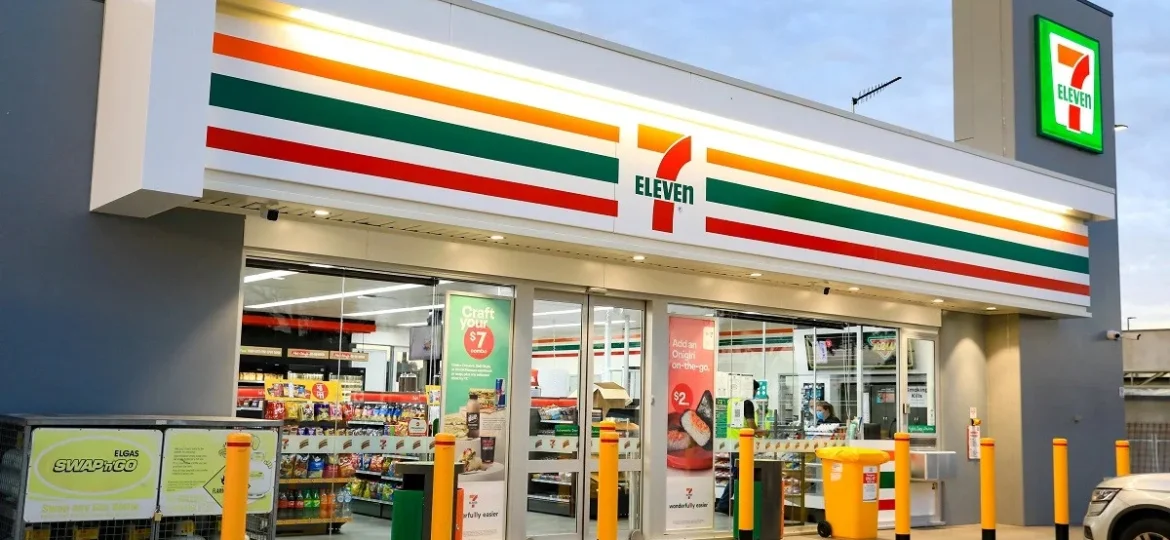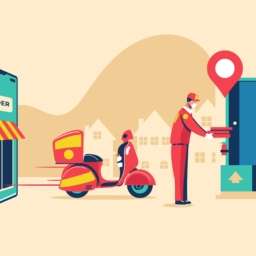
Table of Contents
People love 7-eleven due to the fact they try to anticipate long times within the grocery save and aren’t capable of get a few gadgets at the hours of darkness. However, 7-Eleven is the not unusual call of a series of comfort stores which can be open to the public 24 hours an afternoon, one year a yr.
The target snack products they sell cover a broader span of the market, and they have a business model that allows the customer to access the store and also leave with ease. Hence, 7-Eleven is among the best shopping outlets for people who need to shop during other times apart from normal working hours.
We will be covering the following in the 7-11 stories: the business strategy of 7-11, the revenue strategy, what made 7-11 successful, and some forecasts, Some of exciting hints for successfully running your store.
Let’s find out something about 7-Eleven
Origin story
The roots of 7-Eleven can be traced back to the year 1927, when Southland Ice Company, whose major task was the delivery of ice, began selling foods such as milk, bread, and eggs at the ice docks in Dallas. This happened at a strategic time in 1946 when the stores adopted the name 7-Eleven, in a bid that shows that the franchise aims to be handy to customers at any one time, starting from 7 in the morning to 11 in the evening.
Have you ever thought about the number of people who are behind the 7-11 store franchises or owning and running stores? Learn about these people and how this system helps them enliven the local store that you are buying products from.
How 7-Eleven Became a Brand, They were really lucky.
Video Credit: Business Hook
1. Initial Growth in the U.S.:
This company began operations in the United States of America before it began franchising across the country. The company was centered in areas with high traffic, including business areas, residential areas, and areas that easily offered visibility to the company.
2. Franchise approach:
Another element that has contributed to the expansion of 7-Eleven can be regarded as the case of its franchises. Expanding the number of outlets was also not a problem due to the possibility of granting franchises for shops to local businessmen. Individual store managers or owners are also the franchisees in charge of the operation and management of the stores; therefore, they are the ones that introduce the local elements into the stores.
3. Global Expansion:
That achievement paved the way for 7-Eleven to enlarge inside the United States and, on the same time, across the world. 7-Eleven expands to many nations, often changing the commercial enterprise version based totally at the lifestyle and tastes of every country.
4. Acquisitions and Mergers:
It is noteworthy that the 7-11 business has grown from its establishment through the other two avenues of acquisitions and mergers. 75&M&A has let 7-Eleven expand into new geographic locations swiftly, while 76&Product diversification has enabled 7-Eleven to expand its product portfolio.
5. Technological Integration:
Another of the factors that have characterized 7-Eleven’s growth has been its willingness to adopt recent innovations. The company has invested in mobile applications and online ordering to change the behaviors of customers and improve their needs.
6. Diversification of Offerings:
Among these opportunities, the two major ones in the internal and external environments are geographical expansion and product differentiation. Other than conventional curb-side store merchandise, new products included fresh food and an array of snacks not found in other stores, as well as the company’s variety of beverages for the diverse populace.
7. Strategic Partnerships:
Strategic alliances with suppliers, distributors, and IT companies have proved very relevant to the success of 7-11. They help in optimizing supply chain factors, products’ proximity to the market, and the adoption of new technologies into operations.
How does 7-11 earn money?
It is important that one knows how to earn money so that they can best solve the problem.
1. Retail Sales:
The main revenue stream within 7-11 is the sale of assorted goods in the stores. This ranges from quick take-home foods, drinks, bouquets, perishable products, sundries, and other fast-selling products. This is because the income of the company is from the sale of the above goods in many of its stores.
2. Franchise Fees:
Seven Eleven stores franchise, which means different franchisees own different stores, yet all are outlets of Seven Eleven. These franchisees give fees ‘and royalties to 7-11 in return for the license to use the brand, acquire support services, and profit from the successful business model.
3. Licensing and Merchandising:
Apart from the primary retail operation, 7-11 can have more revenues from other sources, such as brand licensing and product sales. This may comprise products with the manufacturing company’s logo, free items, and collaborations with other companies to produce items for marketing the manufacturing company’s brand.
4. Services and Financial Products:
There are some added services that are provided by select 7-11 stores, including financial services, bill payment services, and money transfer services. These services could be made part of the total income-generating machinery of the firm.
5. Fuel Sales (in some locations):
Another source of additional income in the areas where ‘’ convenience stores ‘’ are connected with gasoline stations is fuel sales. It can earn its revenue as a gross from fuel sales while at the same time earning its revenue from product (convenience store) sales at the stations.
6. Digital Platform and Mobile Apps:
It may develop revenues from mobile as well as other tablet applications as the role of technology is now becoming vital in the retail industry. This can be charges from online sales, membership in loyalty programs, or any other investment in digital business.
Sure, it is right on the spot for one to venture into the food delivery line of business. The high demand created by society’s need for convenience, along with the continuous advancement and transformation due to digitalization, can be said to have contributed to the promising market.
Good time to take entry into the food delivery industry

Certainly, now is a great time to enter the food delivery market. The high demand for convenience, combined with the ongoing digital revolution created a promising environment for new players. The global trend towards online services and changing consumer habits, remote work and busy lifestyles, has increased the dependence on food delivery platforms.
Bonus Insights
Estimate the time, cost, and effort to make a brand like 7-Eleven
In today’s time, building a brand like 7-Eleven requires an extensive strategy that includes market research, development, and appropriate strategies for the brand and its retail use in key areas of branding, location, marketing, technology, and people. Today, competition takes place in every business, so be unique.
We will show you a detailed breakdown of the cost and time required, along with practical principles and steps:
1. Market Survey and Brand Creation
Cost: $20,000-$40,000
Time: 2-4 months
Tasks: market research and investigation to determine the viability of the business, the development of the corporate image, and the marketing plan.
2. Real Estate and Store Development
Cost: $80,000–$1,50,000 per store
Time: 2–3 months
Tasks: acquisition of the sites where the stores are to be established, purchasing of the land, and establishment of stores.
3. Inventory, technology, and staffing
Cost: $1,00,000–$1,20,000 for each store (start capital)
Time: 6–8 months
Tasks: In the initial phases of undertaking an IT project, the activities involved include vendor selection in order to identify the appropriate resources required for the project, the setting up of technological systems used in the project, and hiring as well as training staff for the project also, to stay in today’s competitive market, build an shopping app for your customers and admin panel for your store with a professional software development company.
4. Marketing and customer acquisition
Cost: >$50,000-$1,00,000 (in the case of the initial launch of the product).
Time: 6–8 months
Tasks: The use of advertisement and promotion, such as the use of bill boards or refrigerator magnets
Total Cost: $4,00,000-$6,00,000 per store
Total Time: 1-2 years to setup stably
How will this type of business like Seven Eleven grow you?
Opening a 7-Eleven type of business can greatly increase your growth because it has constant cash flow coming from the sales of the products needed by consumers on a daily basis. Given that its business model is based on established convenience stores, the outlets attract a lot of customer traffic and more repeat business. Besides, effective supply management coupled with the brand’s reputation favorably influences operational costs and thus profitability. Thus, by choosing the locations and focusing on customer satisfaction, a 7-Eleven-like business must attract constant customer flow and expand its territory.
Frequently Asked Questions ( FAQ )
What makes 7-Eleven successful?
7-Eleven’s competitive strength can be defined through three major factors: a convenience-oriented business strategy, a large assortment of products offered, and the capacity to adjust to the requirements of customers. Commitment to the position of clients, the choice of store locations, and around-the-clock work must be credited for their place in the market.
Why is 7-Eleven popular?
Thus, 7-Eleven has taken advantage of its convenient locations of stores and availability 24/7 for any needs, both regular and emergency. This placement makes them a supplier of all goods people may want, from homemade snacks to the necessary alimentary products.
What is the competitive source of the firm that operates 7-Eleven?
7-Eleven convenience stores’ strengths are a wide network of stores and restaurants in the world, supply chain management, and franchising. They are able to achieve good quality and services for their consumers, and at the same time, they are able to order goods and supply them effectively.
What is 7-Eleven’s unique selling proposition?
The competitive advantage or unique selling proposition of 7-Eleven has been its slogan, ‘It’s 7 in the evening somewhere, to express the readiness to serve at any time. It capitalizes on the location being opened round the clock, products covering the store’s range, and fast and efficient transaction processing to claim to be the convenience store for immediate and everyday solutions.



I don’t think the title of your article matches the content lol. Just kidding, mainly because I had some doubts after reading the article.
let us know,
we will reply as soon as possible.
Thank You
Your point of view caught my eye and was very interesting. Thanks. I have a question for you.
Download this app to get more discount.
Thanks for sharing. I read many of your blog posts, cool, your blog is very good.
Thank you for your sharing. I am worried that I lack creative ideas. It is your article that makes me full of hope. Thank you. But, I have a question, can you help me?
I don’t think the title of your article matches the content lol. Just kidding, mainly because I had some doubts after reading the article.
Thanks for sharing. I read many of your blog posts, cool, your blog is very good.
Your point of view caught my eye and was very interesting. Thanks. I have a question for you.
Can you be more specific about the content of your article? After reading it, I still have some doubts. Hope you can help me.
I don’t think the title of your article matches the content lol. Just kidding, mainly because I had some doubts after reading the article.